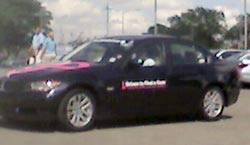Keith Bradsher, former NY Times Detroit bureau chief and author of the SUV craze critique: High and Mighty writes about the maverick executive behind GM’s successful $5,000 Chinese minivan. The executive, Philip F. Murtaugh, is of course, no longer with GM.
Their development was led by an American, Philip F. Murtaugh, a native of Ohio and a maverick executive who was willing to zig while the rest of G.M. was zagging. Mr. Murtaugh was able to create in China the kind of innovative environment that G.M. has struggled for decades to achieve in its American operations. But whether G.M. can duplicate elsewhere its achievements in China or even keep its pace here is unclear.
In what may be a telling sign of the corporate culture at G.M., Mr. Murtaugh’s success in China led not to promotion but to his departure from the company. G.M. declined to discuss personnel matters, but both it and Mr. Murtaugh said he resigned and was not dismissed.
A soft-spoken man in a company known for autocratic leaders, Mr. Murtaugh ran the China operations for more than nine years from his base in Shanghai, repeatedly making some of the best calls in the industry. Now he finds himself unemployed and living in a small community in rural Kentucky.
Bradsher’s tenure covering the auto industry was rather controversial. More on Bradsher.



